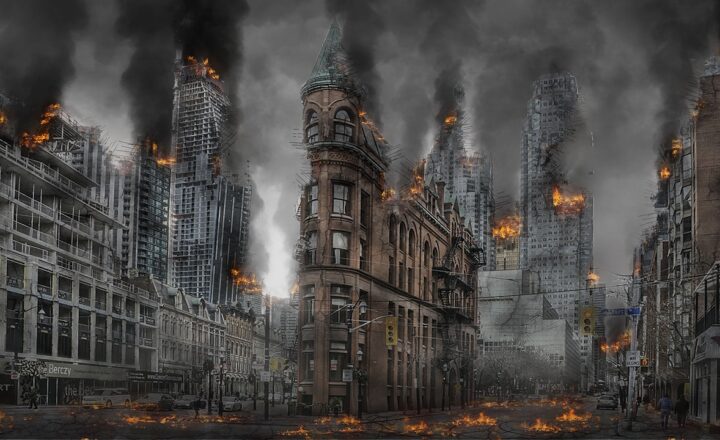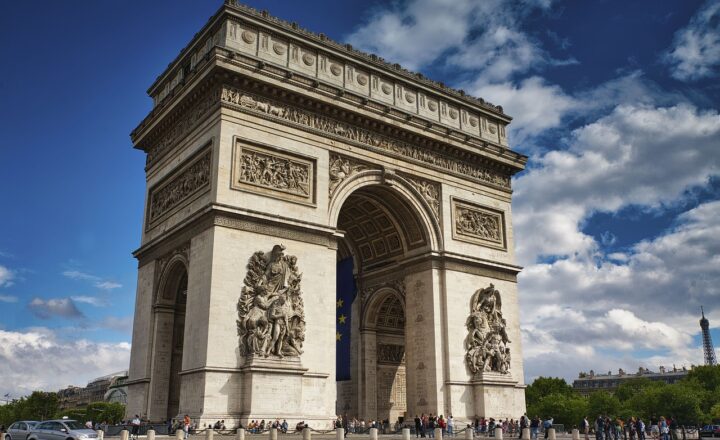How Global Events Reshape Political Boundaries and National Identities
November 16, 2024

Throughout history, the landscape of political boundaries and national identities has been continually evolving in response to global events. From wars and treaties to economic crises and social movements, these events often serve as turning points that redefine how nations perceive themselves and their neighbors. In this article, we will explore the mechanisms through which global events shape political boundaries and national identities, delve into significant historical examples, and examine the implications for today’s world.
1. The Concept of Political Boundaries and National Identities
To understand how global events influence political boundaries and national identities, it is essential to first define these concepts.
**Political Boundaries** refer to the lines that define the territorial limits of a state or country. These boundaries can be established by geographical features, historical treaties, or negotiations between states.
**National Identity**, on the other hand, relates to a person’s sense of belonging to a particular nation. This feeling is often shaped by shared elements such as culture, language, religion, and historical experiences.
Both concepts are dynamic and can change substantially over time due to various influences, including:
- Historical disruptions like wars and revolutions.
- Political decisions and international treaties.
- Socio-economic factors driven by globalization.
- Cultural exchanges and migration patterns.
2. Historical Examples of Global Events Reshaping Boundaries and Identities
There are numerous historical instances where global events have significantly impacted political borders and national identities.
The Treaty of Westphalia (1648)
The Treaty of Westphalia marked the end of the Thirty Years’ War in Europe and established the principle of state sovereignty. The idea that a nation-state’s boundaries and the governance of its territory are independent of external influence fundamentally reshaped how political boundaries were drawn, leading to modern nation-states.
Decolonization (20th Century)
The decolonization movement of the mid-20th century dramatically altered political boundaries across Africa, Asia, and the Caribbean. Nations that gained independence often faced challenges in forging a cohesive national identity due to the diverse ethnic and cultural groups within their borders. This new arrangement prompted both unity efforts and ethnic conflicts within newly formed states.
The Fall of the Berlin Wall (1989)
The Berlin Wall’s fall not only signaled the end of the Cold War but also led to the reunification of Germany and the reshaping of Europe’s political landscape. It marked a significant moment in which identities transcended previously established boundaries, as citizens reclaimed a unified national identity that had been suppressed for decades.
3. Mechanisms of Change: How Global Events Influence Identities and Boundaries
Several mechanisms illustrate how global events change political boundaries and national identities:
A. Wars and Conflict
Wars often lead to the redefinition of boundaries as combatants negotiate peace treaties that may alter territorial control. For example, the aftermath of World War I saw the creation of new nations and the redrawing of borders, such as the dissolution of the Austro-Hungarian and Ottoman Empires, leading to the formation of several modern nation-states.
B. Economic Globalization
Global economic integration has a profound effect on national identities. As nations engage in trade and collaboration, cultural exchange becomes more common, leading to the emergence of hybrid identities. For example, globalization has ebbed traditional cultural expressions in favor of Western influences, creating a challenge to national identities.
C. Social Movements
Social movements advocating for rights, representation, and reparations can significantly alter national narratives and identities. Movements such as Black Lives Matter and Climate Change activism have not only brought local issues to global attention but also forced countries to reevaluate their historical narratives and national identities relative to social justice.
4. The Role of Technology and Social Media
Technological advancements and social media platforms have transformed how global events are perceived and engaged with, shaping political boundaries and identities:
A. Information Flow
The rapid dissemination of information via social media allows events worldwide to become more interconnected. This leads to a more informed populace, provoking new national identities that include global perspectives. For instance, the Arab Spring showcased how social media could unify a generation against authoritarian regimes.
B. Political Mobilization
Social media has accelerated political mobilization efforts, enabling citizens to organize protests and campaigns quickly. The global response to climate change is a prime example; as awareness grows, national policies are increasingly influenced by collective global consciousness rather than solely domestic priorities.
5. Contemporary Examples and Future Implications
Today’s geopolitical landscape is still very much influenced by global events. Current challenges such as the COVID-19 pandemic, climate change, and rising nationalism redefine how nations view their boundaries and identities.
**The COVID-19 pandemic** has created a sense of global interconnectedness, with nations re-evaluating policies on public health, immigration, and international relations. While some countries have become more insular, others are finding new avenues of collaboration.
**Climate change** also poses a challenge to national identities as countries confront the realities of migration and resource scarcity. Nations with differing priorities for environmental policy must navigate the complexities of shared responsibility while maintaining their national identities and sovereignty.
**Rising nationalism** in various parts of the world challenges global cooperation, pushing countries to redefine their political boundaries and identities in favor of perceived self-interest. The tension between global citizenry and nationalism will continue to shape political landscapes in the years to come.
Conclusion
As we have explored, global events play a crucial role in molding political boundaries and national identities. By analyzing historical patterns and current developments, we can grasp the complexities of how nations navigate these shifting landscapes. Understanding the interconnectedness of global events and local identities allows us to better appreciate the diversity of experiences and perspectives that define our world today.
Looking ahead, the interplay of globalization, technology, and social movements will undoubtedly continue to challenge and reshape our notions of nationhood and identity. Embracing this change may ultimately foster greater understanding and cooperation among diverse peoples and cultures around the globe.







